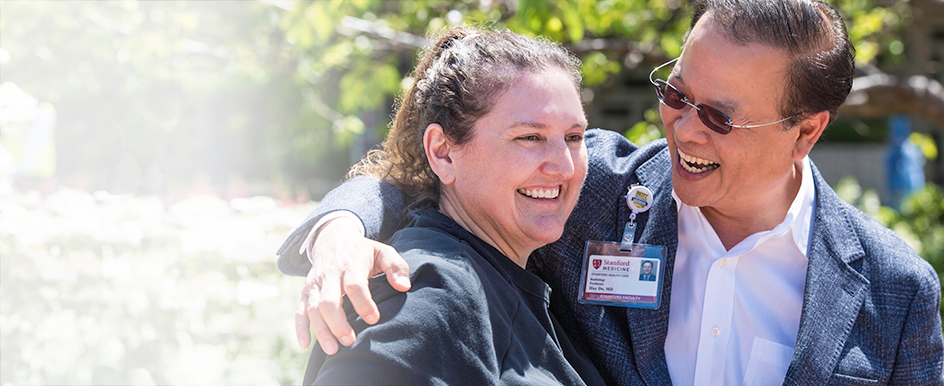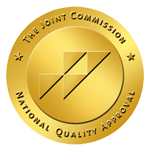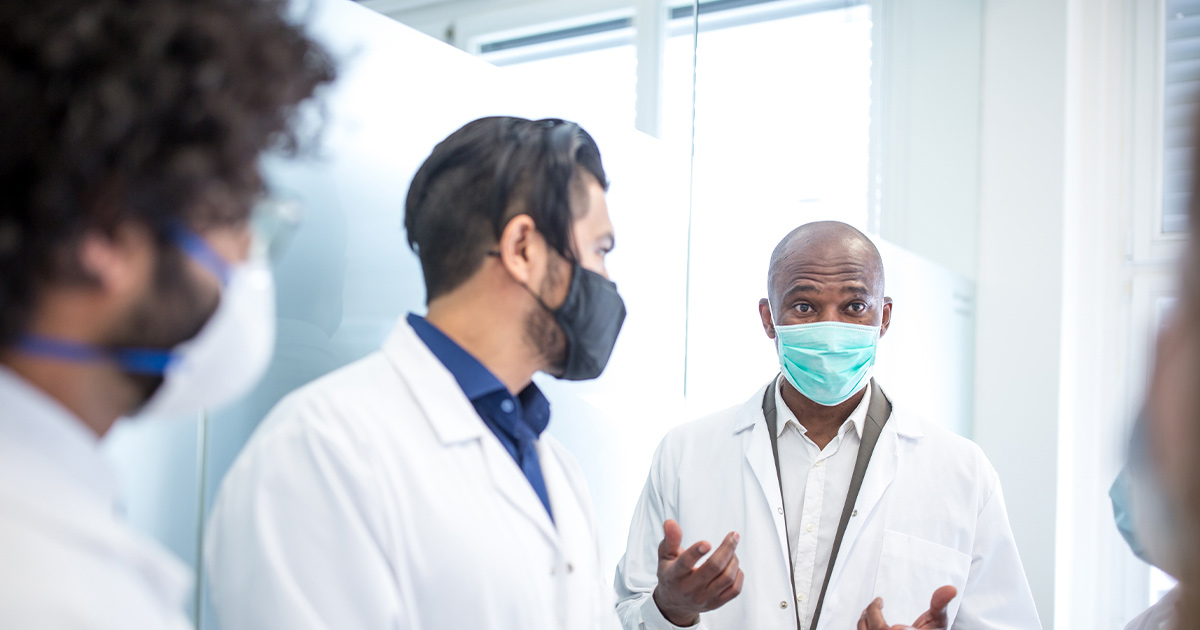Stroke Center
Part of Tri-Valley

Leaders in Stroke Care
The Stanford Health Care Tri-Valley Stroke Center contributes to worldwide research for stroke prevention, diagnosis, and treatment.
Our center is a Stroke Center of Excellence and has received the Stroke Gold Plus Quality Achievement Award from the American Heart Association.
What We Offer You for Stroke Prevention and Care
- Renowned expertise in caring for patients who are at high risk of stroke or who have experienced a stroke. Go to Conditions Treated
- Superior quality and outcomes that exceed national measures for prompt diagnosis and intervention, offering emergency stroke treatment up to 24 hours after stroke onset. Go to Treatments
- Care delivered by a broad team of stroke specialists who design a treatment and prevention plan to meet your needs. Access to Stanford Health Care Vascular Neurosurgery in Palo Alto. Go to Your Care Team
- Access to clinical trials that advance our ability to predict stroke risks and improve healing. Go to Clinical Trials
- Comprehensive support services, including an innovative neurohospitalist program, to help you and your family focus on health and healing. Go to Support Services
- Ease of access at two nationally recognized stroke centers in Palo Alto and Pleasanton in the East Bay, for excellent care close to home. Go to Accessing Care
Our Stroke Center team provides preventive care, diagnosis, and treatment for stroke and stroke-related issues. We provide the most comprehensive, specialized, and leading-edge treatments for every type of stroke, arteriovenous malformation (AVM), and aneurysm.
Stroke
Stroke is a condition in which brain cells suddenly die because of a lack of oxygen. A stroke can result from an obstruction in blood flow to the brain or a ruptured artery that feeds the brain. We treat:
- Ischemic stroke (blood clots)
- Hemorrhagic stroke (brain bleeds)
Stroke Awareness Saves Lives
Learn more about how stroke awareness can save your life or the life of a loved one.
Stroke-induced brain injury
When blood supply to part of the brain is blocked or cut off, oxygen no longer reaches brain tissue. As a result, brain cells die rapidly. This brain cell death causes stroke-induced brain injury. The injury's severity can vary based on the location, duration, and severity of the stroke.
Cerebrovascular disorders
These disorders are related to disease of the blood vessels that supply the brain. We care for people with conditions including:
- Dural arteriovenous fistulas, atypical connections between blood vessels
- Cavernous malformations (CM)
- Intracranial stenosis, narrowed vessels in the brain
- Carotid artery disease, including moyamoya disease
- Developmental venous anomalies (DVA) or venous angioma
Aneurysm
An aneurysm is an abnormal bulge or ballooning of a section of an artery. The artery wall weakens, increasing your risk of brain bleeding if the aneurysm leaks or ruptures. Bleeding from an aneurysm can be life-threatening. It can lead to a type of hemorrhagic stroke known as subarachnoid hemorrhage.
Arteriovenous malformation (AVM)
An AVM is an abnormal set of connections between arteries and veins, creating a tangle of blood vessels. AVMs most often form in the brain and spine. They may cause neurologic symptoms or bleeding.
Transient ischemic attack (TIA)
Sometimes called a mini-stroke, a transient ischemic attack occurs when blood flow to a part of the brain stops for a brief time. Symptoms are similar to stroke but typically last less than an hour before disappearing. A TIA increases your risk of having a stroke later.
Stroke Treatments
The Stanford Health Care Tri-Valley Stroke Center offers a full spectrum of support services for people who experience a stroke, in addition to nationally recognized diagnostic services and treatments.
What to Expect
You will receive a thorough assessment to identify a potential stroke, the type, and the progression of any damage. We treat you with medicine, surgery, or both. Then we monitor you closely in our intensive care unit (ICU) until your condition becomes stable.
As you recover, you will typically move to the inpatient neurology or neurosurgery unit for constant observation, treatment, and eventual rehabilitation. During your hospital stay, a dedicated, interdisciplinary team cares for you. We answer the many questions you and your family will likely have as we prepare you to continue your rehabilitation and recovery.
Stroke Treatments
Once a stroke occurs, our specialists rapidly identify the cause and focus your treatment on correcting that cause. Our first goal is to prevent further stroke. Then we work closely with you and your entire care team–including Stanford Health Care Vascular Neurosurgery in Palo Alto–to enhance your health and work toward your recovery.
Stroke surgery
We offer surgical treatments including:
Carotid endarterectomy (CEA)
This surgery removes clots and blockages from your carotid artery. It can prevent strokes in people who have carotid artery disease.
Interventional neuroradiology
We use minimally invasive procedures and catheters (small tubes placed in your blood vessels) to treat or prevent stroke. This technique can treat blood vessel diseases, tumors, and clots in the brain and spinal canal.
Stereotactic microsurgery for AVMs and aneurysm (CyberKnife)
We deliver high-dose X-rays to a targeted region in a painless, noninvasive procedure to treat brain and spine conditions. Specialized robotic tracking capabilities greatly reduce the amount of radiation to surrounding tissues.
Endovascular treatment of aneurysms
In this interventional neuroradiologic technique, your surgeon guides tiny coils into an aneurysm via a catheter. The procedure closes off the aneurysm from the surrounding circulation. By stopping blood flow to the aneurysm, we prevent the risk of hemorrhagic stroke in the future.
Revascularization of the blood supply
This surgical technique treats aneurysms or blocked cerebral arteries. Your surgeon provides a new route for blood to travel to the brain. The surgeon may graft another vessel to a cerebral artery to create a different source of blood flow to the brain.
Endovascular treatment of AVMs
In this endovascular treatment, your doctor introduces a “super glue” substance to the AVM via a tiny catheter. The substance reduces the size of the arteriovenous malformation and creates an avenue for your doctor to treat the AVM with another microsurgical procedure or radiation if needed.
Nonsurgical stroke treatments
In addition to surgery, we use medications and other therapies to prevent and treat stroke and help you recover. Your nonsurgical care may include:
Emergency medications
Emergency medications to treat stroke include thrombolytics, which help dissolve blood clots to reestablish the blood flow to the brain.
Medications to help prevent stroke
If you have a high risk for stroke, we prescribe medications including anticoagulants/antiplatelets (blood thinners) and antihypertensives, as well as medications to reduce cholesterol levels. These medications help control stroke risk factors.
Rehabilitation
Rehabilitation is a critical part of recovery to help you return to independent living after a stroke. We work with you to regain or build new capabilities in self-care, mobility, communication, and cognitive and social skills.
Programs and Services
In addition to the diagnostic and therapeutic services offered by the Stanford Health Care Tri-Valley Stroke Center, we offer a full spectrum of allied patient care services through our rehabilitation services. Your resources include:
Individual assessment
We design a treatment and rehabilitation plan based on your unique needs. Depending on the area of the brain affected by the stroke, physical and mental damage may be mild or severe. Effects may range from dizziness and confusion to sensory loss or paralysis.
Your treatment and rehabilitation plan helps you regain function if you’ve experienced:
- Hemiparesis (paralysis on one side of the body)
- Aphasia (loss of ability to speak or understand language)
- Spatial-perceptual deficits
- Learning difficulties
- Memory loss
- Behavioral or emotional changes
- Loss of motor skills
Stroke rehabilitation services
After a mild stroke, or if medical therapy was very effective, you may need little or no rehabilitation. Most stroke patients, however, benefit from some type of rehabilitation.
Stanford Health Care offers a wide variety of rehabilitation services to help you recover from a stroke. You may receive inpatient services or outpatient therapies, depending on your specific needs.
The ultimate goal of rehabilitation is to support you as you return to as independent a lifestyle as possible. Because of tremendous advances in stroke treatment, along with ever-improving rehabilitation techniques, the outlook for people who have had a stroke has never been more hopeful.
Our rehabilitation program features a caring, interdisciplinary team that may include:
- Doctors
- Physical, occupational, and recreational therapists
- Speech-language pathologists
- Neuropsychologists
- Clinical social workers and case managers
- Dietitians
- Rehabilitation nurses
Support groups
Stanford Health Care offers the Stanford Stroke Support Group in conjunction with the Pacific Stroke Association. In the group, you have the opportunity to increase your knowledge of diagnostic and treatment options and develop problem-solving and coping skills.
The support group provides a forum where you and your family can share experiences and concerns about rehabilitation, depression, and other daily concerns. We encourage all patients, at any stage of treatment, to participate. Contact the Neuroscience Supportive Care Program at 650-721-8500 or NSCP@stanfordhealthcare.org for more details.
Community resources
If you or a loved one has experienced disability as a result of stroke, many community resources can help you cope and learn to provide support and encouragement. The Stanford Stroke Center can provide you with an up-to-date list of community resources. Contact the Stroke Center at 925-847-3000.
Other resources
- Pacific Stroke Association: support, education, and advocacy for people affected by stroke in San Mateo and Santa Clara counties
- Stroke Awareness Foundation
Advanced Primary Stroke Center
The Joint Commission has certified Stanford Health Care Tri-Valley as a Stroke Center of Excellence.
The Joint Commission is the nation's oldest and largest standards-setting and accrediting body in health care. The Joint Commission operates the accreditation program in collaboration with the American Heart Association/American Stroke Association.
Stroke Center of Excellence certification means that we deliver rapid, high-quality care encompassing every treatment need for people at risk of or experiencing stroke. Our care options include:

- Nonsurgical treatments for stroke prevention
- Advanced surgical techniques
- Innovative interventional neuroradiology procedures
- Stroke rehabilitation
- Stroke support group
Quality and Outcomes
The Stanford Health Care Tri-Valley Stroke Center provides outstanding patient outcomes that match or exceed outcomes at most stroke centers nationwide. Our Neuroscience program ranks among the top in the nation, with exceptional patient survival and recovery.
Your Care Team

Your Doctors
Vascular neurologists
A neurologist is a medical doctor with specialized training in diagnosing, treating, and managing disorders of the brain and nervous system. They treat conditions such stroke.
A vascular neurologist is a neurologist with specialized training in the diagnosis and treatment of stroke. While all neurologists can treat stroke, vascular neurologists are known as "stroke doctors" because of their extra stroke-focused training.

Extended Care Team
Nurses and Nurse Coordinators (RNs)
Multidisciplinary care coordinators are registered nurses who provide one-on-one support throughout your care journey. They help you navigate from your first contact with us to follow-up care, assessing your needs, answering your questions, making referrals, coordinating appointments, and providing education.
Rehabilitation Specialists
- Occupational therapists are skilled practitioners who provide rehabilitation care to help you regain strength and functional ability during and after treatment for stroke. They help you with activities of daily living such as bathing, dressing, managing your medications, and driving.
- Physical therapists work with you and your family to recover your physical function after treatment, such as improving your:
- Strength, especially in the upper body
- Sensation, to relieve numbness in treated areas
- Range of motion, to reduce stiffness and pain
- Movement control, to improve endurance and reduce fatigue

Support Services
At Stanford Health Care Tri-Valley, we take care of the details so that you can focus on your recovery and rehabilitation after a stroke. Our neurologists, vascular neurologists, and other doctors work as a team with physical and occupational therapists, registered dietitians, speech-language pathologists, and rehabilitation nurses to support your recovery.
We help with the details so you can focus on your health and wellness. We offer a range of patient services and helpful information to coordinate the various aspects of your care:
Our Stanford Health Care Tri-Valley team strives to make your care as convenient and seamless as possible. We work around your schedule by offering early appointments. We also have two convenient locations right in your community.
Convenient care where you live and work
- Insurance and billing: We accept several insurance plans to serve you. Most insurance plans cover initial office visits, sleep studies, and follow-up care.
- Coordinated care: Benefit from recognized expertise for emergency situations and ongoing cardiovascular care in one integrated program.
- MyHealth: Our MyHealth system allows you to access your records and view test results through a secure, online portal and device app. You can also communicate with your doctors.
To schedule an appointment, please call:
Palo Alto: 650-723-6469
Pleasanton: 925-263-5588




